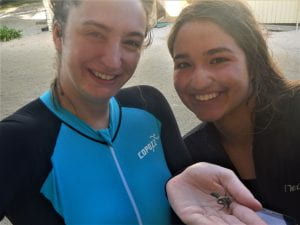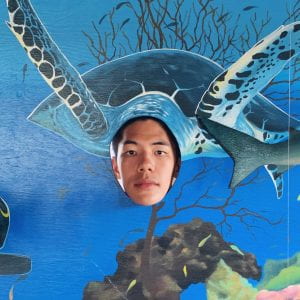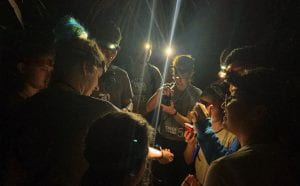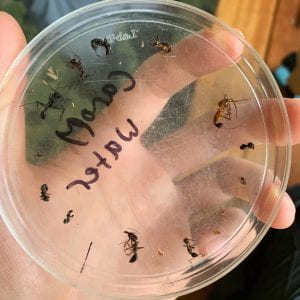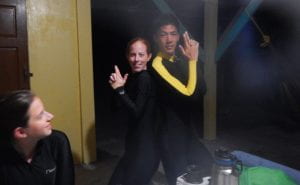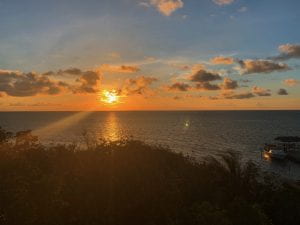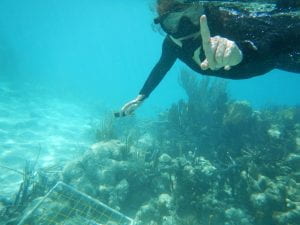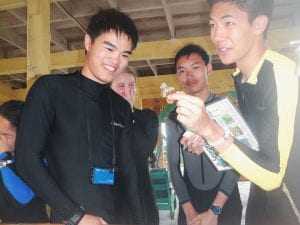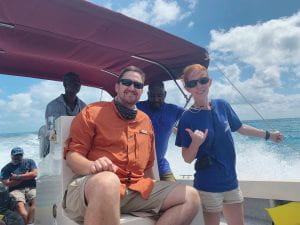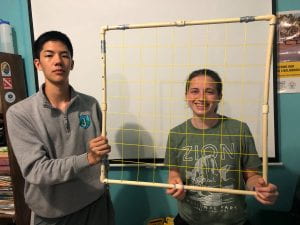Hi!
Prepare yourself for a super long blog that I have been procrastinating posting because I’ve been thinking long and hard about this trip. I’ve written and re-written this so many times; the words just aren’t coming out right. There are things that I have to say, things that I want to say, and things that I can’t properly articulate for my life (don’t worry though, I’ll try). All that to say, good luck reading.
To start, I just spent two weeks in two of the most biologically diverse ecosystems on the planet and that was pretty damn awesome. Foremost, it was hard not to notice just how much life was everywhere, and how the strategies competing organisms used were similar in the reef and rainforest. There’s definitely not enough space and not enough resources, and in both ecosystems competitors grow up and over each other to get a leg (or leaf, if you will) up. In the rainforest this meant super tall trees with lots of open underbrush, but in the reef this meant structures piling on top of one another in super dense growths that all blended into one another. Definitely the way things were growing had to do with how biodiverse the ecosystems were and how the individuals had to fend for themselves in a nutrient-poor environment. Also, the shapes of animals and plants stood out to me. There was a precarious balance of broad palms/algae/sea fans to try and maximize surface area for photosynthesis, narrow vines and branching corals to shoot between gaps and crevices to the top for light, intricate structures to try and prevent self-shading, and animals with long/narrow bodies for navigating the brush or the coral.
My favorite part has to be exploring the ATM cave (I did title that day the “BEST DAY EVER” after all). Mostly because after the cave I felt like myself for the first time on the trip. I was sore and tired and hungry but didn’t feel any of those things because I was so overwhelmed with joy. Ask anyone, I was literally bouncing up and down. I don’t think it was the things we saw (although the bats, pottery, and skeletons were cool) but more of the rush of climbing around, the comforting sense of trust and communication amongst my team, and the feeling of being in the river.
Weirdly enough my worst day was also in water, this time saltwater. The worst day was the first day at Middle Caye. We’d done a lot of travelling in the morning and I was nauseous, then we ran through the Mangroves of Death (and you know how I feel about bugs), and then we tried to wade around a patch reef, which to be honest was absolutely miserable. I was trying to stand still and take pictures of the corals but also look for specific things but also kept getting pushed around by currents…and dropped basically everything I was clunkily holding, then had to find it in the churned up sediments while it was getting pulled by currents and I was getting pulled by currents…I was frustrated and I felt awful and I may have cursed loudly and explicitly at the ocean. It wasn’t necessarily what we did, it was just feeling so physically and mentally incompetent (luckily things got way better and my faith in the pursuit of marine science was restored).
I’ve been telling people that this course differed from what I was expecting in ways that I didn’t expect…so what exactly does that mean? Hint: I myself am not quite sure, but I’ll try my best to explain. You might remember that my pre-departure post back in Houston two weeks ago didn’t seem too thrilled about going. I had just finished probably my most exhausting semester ever, but really it wasn’t finished because I was still doing assignments for this class and picking up shifts at work and not sleeping…and I expected to be an anxious, exhausted grump on this trip (with maybe also the optimistic expectation that my expectations would turn out to be wrong). I was exhausted and nervous, but the things that stood out to me were the little things that I didn’t have opinions about while I was doing them. Wearing the same pair of pants for six days in a row, not waking up to immediately check my email, and not having electricity or hot water all seemed normal. Maybe I expected to either have strong negative or strong positive feelings about everything, not to just be…content.
I miss Belize. I miss everything that I got used to. I miss waking up at 5am and feeling like I was doing something meaningful. I miss the schedule (I know it sounds weird, but I accidentally stayed up ‘til 1am last night because we have electricity and it just never got dark…and I wasn’t doing anything really). I miss the noise. I miss the birds in the morning, the howler monkeys, the frogs and bugs at night, the rain, the wind, and the waves. I miss sharing every waking moment with twelve other people who brought so much joy and excitement into my life.
As I sit here, drinking my morning (not instant) coffee with (not powdered) milk, I can’t help but think about how truly awful it is to try and capture something like this in words. The most meaningful things that I learned aren’t in words, but in feelings.
I learned that doing things because I’ll never have the chance to again stopped being the reason after the first time I said it. I got up for birding every day, climbed the bird tower, and hiked and snorkeled at night not because I’d kick myself if I didn’t, but because I wanted to. I learned that I may be a nervous wreck but not-so deep inside I do have a craving for adventure.
I also learned that I’m capable of a lot more than I give myself credit for. I had a panic attack in the middle of a hike and kept going, willingly threw my body to the bugs for science, climbed up slippery cave rock-walls, and headed straight into adventure when I couldn’t see what was in front of me. Maybe I could be a field biologist one day, because the things I thought were going to stop me are challenges that I now know I’m ready to face.
Lastly, I learned what I’m excited about. I’m excited about reptiles. Frankly, I want to hold every single snake (they’re big, friendly noodles I swear). I’m excited about boats. Yeah, I get motion sick and being nauseous for the first day or so sucks, but I love the rush of the wind and the ocean spray and being the first person to jump in the water. I’m excited about biodiversity, about finding things and counting things and discovering the mystery that’s out there. I’m excited about making graphs and figures and being able to tell the world what I’ve found. I’m excited about the little things being important. I’m excited…for a future that looks a lot like this.
So, in summation, every day I was sunburnt, exhausted, bug-bitten, nauseous, dirty, sore, anxious, and everything else I was worried about before leaving…but I’d do it all again in a heartbeat because this trip was the affirming, exciting, more-than-I-could-have-imagined, once in a lifetime experience that I hoped it would be when I applied. There aren’t words to express the genuine gratitude and appreciation I have for Dr. Solomon and Dr. Shore, all of the wonderful people who welcomed us to Belize, and all of my classmates for making this trip something I will never forget.
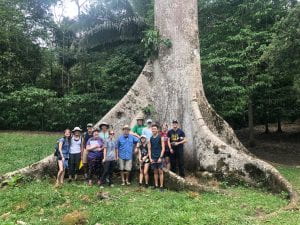
-Kelsey

